Turin

Audio tour Summary
Welcome to Turin – capital of Piedmont and the first capital of the Kingdom of Italy, an important university, artistic, touristic, cultural and scientific center of the country. It is situated on a plain divided by the rivers Po, Dora Riparia, Stura di Lanzo and Sangone. The River Po crosses the city, so the center of Turin lies on its left bank. The city is surrounded by the 4000 meter high Alps, and the Susa valley connects it with France.
If you have enough time in Turin, our tour recommends that you also visit the National Automobile Museum and the Basilica of Superga, both situated outside the city center. The Automobile Museum can be easily reached from the Castle of Valentino by bus (18), and the Basilica of Superga is connected to the city center or railway stations by buses 61, 68 or 15.
Our tour starts in the main city square – piazza Castello, surrounded by numerous places of interest that you are invited to enjoy!
1 The Royal Palace
The Royal Palace of Turin (Palazzo Reale) was the first and most important residence of the House of Savoy, being the center of the Kingdom of Sardinia power for almost three centuries. The Palazzo Reale, being part of the Savoy residencies’ ensemble together with other palaces, is included on the UNESCO World Heritage Site list.
The Palace is situated at the very center of the city, on piazzetta Reale, adjacent to the main piazza Castello, where all of Turin’s main streets start – via Po, via Roma, and via Garibaldi.
Planned at the end of the sixteenth century as a royal residence by Ascanio Vittozzi, with the architect’s death, it was charged by Christine of France to Carlo di Castellamonte. The central façade was surrounded by two higher lateral parts according to the project of Carlo Morello in the seventeenth century.
The rooms of the noble floor are decorated with allegorical images glorifying the royal dynasty members. Different artists were called in to fresco the palace – Daniel Seiter worked on the Gallery, and the famous Guarino Guarini realized the Chapel of the Holy Shroud connected with several rooms of the Palace. In the eighteenth century, some notable reconstructions were effected by Filippo Juvarra who built the Scissors staircase (Scala delle Forbici) and the Chinese Cabinet. In the nineteenth century, some ancient and Egyptian elements were added to the interior by Ernesto Melano and Pelagio Palagi. Palagi also adorned the fence of the Palace with sculptures of Castor and Pollux.
When the capital of the new Italian state moved to Rome, the Royal palace became a Museum, as it is today. It is possible to visit the Noble first floor with the magnificent Royal Winter Apartment (l’Appartamento d’Inverno) and the Throne room, and also the Gallery of Daniel.
The Royal Armory of Turin contains one of the most important collections of arms and armor, formed by the Savoy famiy.
The Scissor staircase leads to the second floor where the Apartment of the Piedmont Prince, the Chinese Cabinet, Princess Maria José and other rooms are situated.
The courtyard of the Palazzo Reale conserves the remains of a Roman amphitheater – La manica nuova. The Royal Palace has its royal gardens – Giardini Reali, projected by the architect André Le Nôtre who also worked at the court of Versailles.
The Royal Palace museums, together with the Sabauda Gallery, the Royal Library, the Archeological museum and the Armoury form Polo Reale, are also included on the UNESCO list.
2 The Cathedral of Turin (Duomo)
The Cathedral of Saint John the Baptist (or simply ‘the Duomo’) is the main Catholic church in Turin that hosts the Holy Shroud, attracting numerous pilgrims from all over the world.
The Duomo is situated in the city center, on San Giovanni square, close to the Royal palace and near to the archeological Roman area. The actual Cathedral was based upon three preexisting early Christian churches dedicated to the Holy Savior, Saint Mary of Dompno and San Giovanni Battista (or Saint John the Baptist). In the period of Lombard rule in the seventh century, Saint John was proclaimed the patron saint of Turin.
The three churches were destroyed at the end of the fifteenth century, but the bell tower, completed in 1469, remained untouched and today can be seen close to the Duomo. This campanile is 63 meters high and is dedicated to Saint Andrew.
The construction of the actual Cathedral began in 1491 and the first stone was laid by Blanche of Montferrat, widow of Charles I of Savoy. Amedeo de Francisco da Settignano, also known as “Meo del Caprino,” was chosen as the architect, who worked on the Cathedral until his death in 1501. The Duomo was completed four years after his death.
At the end of the seventeenth century, it became necessary to enlarge the Cathedral to house
the Holy Shroud, and the architect Bernardino Quadri planned a special chapel to host the relic. To complete the work, in 1666, Guarino Guarini was called in, who also took part in the San Lorenzo construction, another church very close to the Duomo. Guarini created an incredible architectonic masterpiece, so the Chapel became known by two names – the Chapel of the Holy Shroud and the Guarini Chapel. The famous cupola was built in twenty eight years, and since 1694 the Holy Shroud has been kept in the Chapel.
3 The Holy Shroud (Sacra Sindone)
The Shroud of Turin or the Holy Shroud (“Sacra Sindone” in Italian) is one of the most important Catholic relics conserved in the Cathedral of Turin. It is visited by numerous pilgrims from all over the world. The Shroud itself is a linen cloth with the image of a man and the wounds he suffered during crucifixion. The Christian tradition identifies this man as Jesus Christ, and the Shroud is considered to have covered Christ’s body in the tomb.
The Shroud has always raised many doubts and discussions about its origin and about the images. One of the last radiocarbon dating tests in 1988 showed that the cloth dates to the period between 1260 and 1390, but even these results are also doubtful. It is still one of the most controversial questions nowadays.
The first official historic reference to the Shroud of Turin dates back to 1353, when a French knight, Geoffroi de Charny, built a church in Lirey and donated the Shroud to it, although there was no explanation offered about how he obtained it. A few years later, the Shroud went on display to the public, attracting lots of people to visit the church. This fact did not satisfy the French episcopacy, which began to claim that the Shroud was a fake, that it was not mentioned in the Gospel and that an artist had depicted the image of Christ. They even mentioned the name of the artist.
In the mid-sixteenth century, the Shroud was purchased by the dukes of Savoy, who kept it at their capital Chambéry, in a specially built chapel. In 1532, the chapel caught fire and, although the Shroud was saved, it suffered in the fire and these traces can be seen even today.
When the duchy of Savoy was transferred from Chambéry to Turin, the Shroud was also moved there, where is has been since the end of the sixteenth century till today. The Shroud has several times been moved out of the city for short periods, the last time during World War II, but has always returned to Turin.
In 1694, Guarino Guarini built a Chapel for the Shroud between the Cathedral and the Royal palace. The Chapel was an architectural masterpiece of Guarini with a magnificent cupola and direct access from several rooms of the Royal palace.
The Shroud itself shows two images of a naked man, the front and back the body. In the image of the face, it is possible to see the beard and long hair of the man, on the hands and legs the traces of nail wounds are visible, and the back image contains traces of a whip.
The Shroud is not always accessible to the public. It was last replaced in the Chapel of the Cathedral of Turin in April-June 2015.
4 The Church of San Lorenzo
The Church of San Lorenzo in Turin is also known as the Royal church of San Lorenzo (Real Chiesa di San Lorenzo) because it was built after the King’s wish on the main city square – piazza Castello.
Emmanuel Philibert I, Duke of Savoy, and his cousin Philip II of Spain won the Battle of Saint-Quentin in France on August 10 1557, on the day of Saint Lawrence (San Lorenzo). The battle was very important as it was one of the final battles in the numerous wars in Italy in the sixteenth century. So, both Savoy royals promised to build a church in the honour of San Lorenzo if they were victorious.
Philip II of Spain built a monastery near Madrid, and Emmanuel Philibert I restructured the existing ancient chapel of Saint Mary ad Presepae and dedicated it to San Lorenzo.
When, in 1578, the Holy Shroud arrived in Turin, it was displayed for the first time in the chapel. The archbishop of Milan conducted a celebratory service, where also a famous poet Torquato Tasso was presented.
The Church received its final appearance a century later, when the famous architect Guarino Guarini was invited to reconstruct San Lorenzo. He changed the original shape of the Latin cross, making it octagonal, with chapels along its walls. The concept of the interior contains the number 4 and especially the number 8, symbolizing eternity, perfection and the victory and the return of Christ.
The real masterpiece of Guerini is the cupola of the church, which is 50 meters high. The cupola has eight columns inside and is illuminated by eight elliptical windows, and special lines that form an octagonal star – the symbol of Islamic culture.
Guerini projected also the façade of the church but it has never been realized, so the whole edifice does not look like a church but fits in perfectly with the other edifices on the square. The only church-like element is the cupola towering above.
5 Madama Palace
Palazzo Madama, or the Palazzo Madama e Casaforte degli Acaja, in full, can be translated as the Madame Palace and Fortified House of the Acaja. It is an architectonical and historic complex in Turin, situated on the main square, piazza Castello.
The complex has two façades – one of them faces the river Po and was erected by the Romans as a city gate called Porta Decumana. The original porta has not survived; the only Roman porta today can be seen in piazza Cesare Augusto. Porta Decumana was gradually incorporated into the castle. With the end of the Roman era, the castle was transformed into a fortifying edifice. In the XIVth century, the Savoy-Acaja enlarged the fortification and the castle became the center of their power. Being a royal residence for some years, it hosted the royal family and later was connected by a gallery to the new Royal Palace, but that gallery did not survive to our time.
When the capital of the Savoy Kingdom was moved to Turin and the Royal Palace was completed, the castle was considered a palace for royal guests. Since 1578, during important holidays or weddings, the Savoy exposes the Holy Shroud of Turin from the Palazzo Madama. The palace was called “Madama” after Christine of France and Marie Jeanne of Savoy, who chose the palace as their residence and called it a seat of “Royal Madam”.
It became necessary to change the medieval look of the palace and the Savoy architect Filippo Juvarra was called in to undertake the work. He projected a new baroque palace of white stone but, after the construction of the avant-corps, the rest of the work was stopped and the palace was never completed, leaving the castle with two “faces.”
Later, the palace became the seat of the Royal Picture Gallery, and some years after, a seat of the Court of Cessation and the Senate.
In 1934, the Palazzo Madame hosted the Turin City Museum of Ancient Art. Today, its large collection contains ancient sculptures, a picture gallery and numerous porcelain exhibits.
In 1949, the funerals of the players from the local football club “Torino”, who died in an air crash near Turin, were held here.
6 Museo Egizio
Museo Egizio is considered the second most important Egyptian museum in the world after the Cairo one due to the value of the antiquities it hosts. The museum is among the top eight visited sites in Italy, with more than 500,000 tourists.
King Charles Emmanuel I of Savoy in 1630 bought the first item for the future Museum: it was the Mensa Isiaca, an altar tablet in the Egyptian style realized in Rome in the first century AD for the Isis temple. In 1724, Victor Amadeus II of Savoy founded the Museum of the Royal University of Turin next to the University building in via Po and donated a small collection of antiquities from all over Piedmont. Some decades later, another King Charles, Emmanuel III, decided to enlarge the museum’s collection and commissioned a botany professor and a passionate Egyptologist from Padua Vitaliano Donati to take a trip to the East. Donati was charged with buying some ancient Egyptian objects, mummies, and manuscripts that could prove the importance of the Mensa Isiaca. All of the items collected by Donati arrived in Turin in 1759 and were placed in the University Museum.
The Royal Museum of Egyptian Antiquities was officially established in 1824, when Charles Felix of Savoy bought a large collection of Egyptian objects from Bernardino Drovetti, who was a French consul in Egypt and a friend of the Egyptian viceroy, Mohamed Ali. Drovetti sold more than 5000 items including 100 statues, 170 papyri, sarcophagi, mummies, etc. On reaching Turin, the collection was placed in the edifice of the Academy of Sciences, projected by Guarino Guarini – known also as an author of The Holy Shroud Chapel and the Church of San Lorenzo in Turin. The University collection was also removed to the Academy building.
Today, the collection of Museo Egizio boasts more than 30,000 objects from the Paleolithic to the Coptic era. The most notable exhibits are the tomb of Kha and Meryt (or the Theban Tomb), the temple of Tuthmosi III, the Papyrus of Turin or the Turin King List, the Mensa Isiaca, etc.
In April 2015, the Museum was reopened after three years of work and now offers tourists a more convenient and interesting museum route.
7 The Carignano Palace
The Carignano Palace (Palazzo Carignano), planned in the second half of the seventeenth century by Guarino Guarini, is an outstanding example of the European Baroque style. Together with the Royal Palace, the Madama Palace and other royal residences are included on the UNESCO World Heritage Site list.
The Palace was erected by order of Emmanuel Philibert of Savoy, Prince of Carignano, and was completed in 1685. In 1694, it became a permanent residence of the Carignano Princes, and here were born the future sovereigns Charles Albert and Victor Emmanuel II.
In 1831, in the Carignano Palace, Charles Albert ascended the throne and afterwards transferred the Palace to the State, and so it became a seat of the State Council and the Postal Directorate. Later, when the Subalpine Parliament occupied the Palace, the architect Carlo Sada built a splendid salon for the holiday reception inside.
In 1861, when the first Italian Parliament started to hold its sessions here, the Palace was found to be too small, so the architect Amedeo Peyron was commissioned to enlarge it. A few years later, it was also decided to build the second façade of the Carignano Palace, as it faces piazza Carlo Alberto to the rear, and so it became the second edifice after the Madama Palace that has two different styles of façade. The works was realized by the architects Domenico Ferri and Giuseppe Bollati and were completed in 1871.
Later, the Carignano Palace hosted numerous institutions and cultural associations. Nowadays, it is a seat of the Central Directorate of Piedmont Cultural Heritage and the National Museum of Italian Risorgimento (Italian unification). The Museum collection, reopened in 2011, occupies 30 rooms and tells the full history of the unification from the late eighteenth century up to World War I.
Since 2011, it has also been possible to visit, after the restoration work, a sixteenth/seventeenth century apartment of the Princes called “dei Principi.” Among the frescoes inside the Carignano Palace are works by Stefano Legnani, known also as “il Legnanino.”
8 Mole Antonelliana
Mole Antonelliana is the main symbol of the city and of the symbol of Italy worldwide. The monument is depicted on several euro coins and, in 2006, formed a part of the official Olympic Games’ logo. Mole Antonelliana is the highest building in the center of Turin, being 167.5 meters high.
For a long time, the Mole was the highest stone building in Europe but, during the twentieth century reconstruction, when ferroconcrete and steel beams were used, the monument lost its “only stone” status.
The tower is named after an architect, Alessandro Antonelli
Originally, the Mole was erected as the synagogue of Turin. When, in 1848, in Italy, freedom of religion was proclaimed, the Jewish community bought the land in this zone. The original synagogue project was only 47 meters high, but when Antonelli was chosen as the architect, the project significantly changed. The construction began in 1863 and, six years later, it stopped, at a height of 70 meters due to financial problems.
In 1873, the city of Turin bought the land and the building so that Antonelli could continue his work. It was a mixture of the neo-Gothic and neoclassical styles. During the construction work, the architect modified the project several times, so the Mole that was planned to be only 113 meters high became 146 meters in 1884, even without a steeple.
Four years later, after the earthquake in Turin, the Mole was completed, reaching a height of 163.35 meters. The top of the steeple was finished after the death of Antonelli by his son Costanzo and one of his followers, Crescentino Caselli. The official inauguration of the Mole took place on April 10 1889, topped with a statue of Genius with a star on his head of about four meters, making a total height 167.5 meters. The citizens of Turin call this golden statue simply an “angel.”
Today, the Mole Antonelliana hosts one of the most visited museums in Italy – the National Museum of Cinema. It is also possible to reach the roof of the Mole by elevator to enjoy one of the best panoramic views of the city and the nearby 4000-meter-high mountains.
9 The National Museum of Cinema
The National Museum of Cinema in Turin is one of the most visited in Italy and is situated in the famous tower Mole Antolleniana. The main collection of the museum was started by the historian and collector, Maria Adriana Prolo. Now, the Museum is supervised by the Foundation that was named after her.
The first project of the Museum dates back to 1941 when Maria Adriana Prolo started to realize her idea under the patronage of the fascist government. After the building of Cinecittà in Rome, Turin became the cinema center of northern Italy. The municipality gave to Maria Adriana Prolo one room in the Mole Antonelliana, the future seat of the Museum.
After World War II, the Museum started its active life, featuring in different exhibitions and experimental TV transmissions. It started to attract more people and cinema researchers who were seeking a place to host the permanent collection. The idea to occupy all of the Mole Antonelliana was devised in the 1950s after a tornado damaged the tower, and after the visit of Henri Langlois, the founder of Cinématheque française and the Museum of Cinema in Paris. He insisted, during his meetings with journalists and local authorities, that the wonderful collection of Professor Maria Adriana Prolo should have an appropriate home. In 1953, the Foundation was born and the collection was placed in Palazzo Chiablese on piazza San Giovanni, where it remained till 1985.
Later, it was transferred to the cinema Massimo but, in 1991, Maria Adriana Prolo died soon after the inauguration of the new museum spaces. Since year 2000 Museum occupies all five floors of Mole Antonelliana. The collection hosts numerous pre-cinematographic optical cameras (known also as magical lanterns), film posters and costumes, films and books, more than 80,000 photos, etc.
In 2004, the Museum was filmed in “After Midnight” (“Dopo mezzanotte”) by Davide Ferrario, that made the Museum even better known among the public.
Another attraction of the Museum of Cinema is the panoramic view from the cupola of Mole Antonelliana, accessible by elevator.
10 The Church of Gran Madre di Dio
The church of Gran Madre di Dio (Great Mother of God) is one of the most important Catholic churches in Turin. It is situated on the bank of the River Po, and connected to the city center by the Victor Emmanuel I Bridge. The church is reminiscent of the Roman Pantheon due to its architecture. Some city legends connect the church with the Holy Grail.
The Gran Madre is a church in the neoclassic style that was erected to celebrate the return of King Victor Emmanuel I of Savoy in 1814 after the Napoleon’s defeat. That is why the tympanum of the church contains the inscription: ORDO POPVLVSQVU TAVRINVS OB ADVENTVM REGIS (The nobility and the people of Turin for the return of the King). The author of the church was the architect Ferdinando Bonsignore, who was chosen through a contest and who started work in 1818. He was not the only architect, of course, as Giuseppe Formento, Virginio Bordino and Luigi Canina also took part in the work. The sculptors commissioned to help with the decoration were the great Bertel Thorvaldsen and Carlo Finelli.
Gran Madre di Dio was officially inaugurated in 1831 under the rule of Charles Albert of Sardinia.
The church is accessible by a staircase that, on both sides, hosts statues representing Belief and Religion. The statue of Belief hold a goblet in her hand, and legend tells how this is a symbol of the Holy Grail that arrived in Turin together with the Holy Shroud and is conserved somewhere between the two statues.
Notable are the sculptural works of both the external and internal part of the church, especially four bas-reliefs realized after the drawings by Carlo Finelli and representing the Life of the Virgin.
11 The Castle of Valentino
The Castle of Valentino (Castello del Valentino) is a historic edifice situated in the heart of the second largest park in Turin, Valentino Park, along the west bank of the River Po. The Park was opened to the public in 1856 and became the first public garden in Italy. As a residence of the Savoy House, the Castle was included on the UNESCO World Heritage Site list.
The first mention of Valentino’s name dates back to 1275, as the relics of Saint Valentine (San Valentino) were conserved in the Church of San Vito on one of the hills next to the Park and later moved to the nearest church.
The ancient castle was bought by Emmanuel Philibert of Savoy on the advice of the famous architect Andrea Palladio. The Castle hosted noble families who bought there six rooms: the Saintmeranes, the Cicognas, the Pacellis and the Calvis.
The Castle of Valentino was completely reconstructed on the wish of young Christine of France, the Duchess of Savoy. French palaces inspired her to give to the castle its actual look, with four angle towers encircling the edifice in the form of a horseshoe, with a large courtyard with a marble pavement. The roof with two mansard levels was in the typical transalpine style and the whole castle suited the tastes of a young Duchess. The work by Carlo and Amedeo Castellamonte lasted 30 years and was completed in 1660. One of the legends of Turin tells how the Castle was a place for amorous meetings between Christine of France and her lovers, and that there was even an underground passage under the River Po, connected with the Vigna Reale, where she met with her counsellor Filippo D’Agilè.
In the following centuries, the castle was almost abandoned, until 1860, when the Engineering Faculty chose it as its seat. The years of neglect in fact benefitted the Castle, its frescoes and interior, as the meant that it remained very well-conserved. So, today, it is possible to admire the seventeenth century frescoes in good condition, the rooms of the first floor and a wonderful Zodiac room with a central fresco depicting the River Po and the image of Poseidon.
Today, the Castle of Valentino hosts the Architecture Faculty of the Polytechnic University of Turin.
12 The National Automobile Museum
The National Automobile Museum (Museo nazionale dell’automobile) is one of the most ancient automobile museums in the world.
The Museum was born during the congress of the Automobile Club of Turin in 1932 to honor automobile veterans – those who had had a driving licence for at least 25 years. The authors of this proposal were the pioneers of the motor sport in Italy, Cesare Goria Gatti and Roberto Biscaretti di Ruffa, cofounders of the Automobile Club and FIAT.
Benito Mussolini personally approved the idea and, in 1933, the National Automobile Museum was officially founded. At first, it was difficult to find an appropriate space for the collection, and the first seat was founded near the city stadium. It hosted about one hundred vehicles, the archive and the library. During World War II, the archive and library were seriously damaged, while the collection was untouched.
Since the 1960s, the Museum has been situated on the bank of the River Po in an edifice built specially to host the vehicles. It is also an extraordinary example of the modern architecture realized by Amedeo Albertini. In 2011, the Museum was reopened after reconstructions work and was notably enlarged.
The vehicles are displayed in 30 rooms, accompanied with scenography and installations. Nowadays, the collection consists of more than 200 cars, but only 160 are conserved in the Museum. The rest of the vehicles are kept in the garage and can be visited at special request. The displayed cars date from 1769 to 1996, but sometimes there are also modern temporary exhibitions of concept and up to date cars.
More than 80 automobile brands representing nine countries are collected in the Museum. The most valuable exhibits are the first FIAT 3 ½ HP of 1899, La Jamais Contente of 1899, the first car to go faster than 100 km/h, the first Benz of 1893, a 1914 Rolls Royce Silver Ghost, racing Ferrari and Alfa Romeo Cars and many others.
13 The Basilica of Superga
The Basilica of Superga (also called the Royal Basilica of Superga) is a church that was built out of gratitude to the Virgin Mary by Duke Victor Amadeus II for the defeat of the French troops in the Siege of Turin in 1706. Before the decisive battle, the Duke climbed the hill to see the rival’s army and, praying to the Virgin Mary, he promised to erect a church if he were victorious.
The church was situated on a hill called Superga, which comes from “Serrapergia” – a Latin-Germanic name meaning “mountain among the hills.” To host the Basilica, the hill was lowered by 40 meters.
The church’s construction was started after the project by Filippo Juvarra in 1715, and it was decorated by the plasterer Pietro Filippo Somazzi. The Basilica was completed in 1731 and inaugurated in the presence of King Charles Emmanuel III.
The church is 75 meters high and, together with the height of the hill (672 meters), it is visible from all over Turin. Besides, from the Superga hill, there is a great panoramic view of the city and the Alps.
The Royal Crypt of the Basilica hosts several tombs of the Savoy family.
In the twentieth century, the church sadly became known for the “Tragedy of Superga.” On May 4 1949, an airplane returning from Lisbon, bearing the whole Torino football team who had just played a friendly match with S.L.Benfica, crashed into the back of the Basilica of Superga. There were 31 casualties.
Today, the wall remains unrestored in memory of the tragedy, but bears a memorial plate, where many football fans come to pay their respect to “Grande Torino”, as the team is known among its supporters. It was called “Grande Torino” also because the team was the Italian champion for five consecutive seasons and no other team could beat it.
Activities
The History of Bicerin
The Origins of Bicerin

Bicerin is one of Turin’s most famous drinks, made from espresso, chocolate, and milk cream. This delicious beverage has its roots in the 18th century and became especially popular in the 19th century. It is served in small glasses and has remained a symbol of Turin’s café culture. The word bicerin means “small glass” in the local Piedmontese dialect. Traditionally, Bicerin was enjoyed in historical cafés, which became gathering places for artists, writers, and politicians.
One of the most famous cafés where Bicerin was served is Caffè Al Bicerin, located in Piazza della Consolata. It was opened in 1763 and is still open today, preserving its old-world charm. Over the centuries, famous personalities like Alexandre Dumas, Giacomo Puccini, and even Turin’s own Count Camillo Cavour enjoyed this drink at the café.
- What is Bicerin made of?
- What does the word Bicerin mean?
- Which famous café is associated with Bicerin?
- When was Caffè Al Bicerin opened?
- Name two famous people who enjoyed Bicerin at Caffè Al Bicerin.
Vocabulary activities
Turin’s Historical Cafés
Turin’s Cafés and Their Role in History 
Turin is not only famous for its royal palaces and elegant squares but also for its historical cafés. These cafés were important meeting points during the 19th century for intellectuals, writers, and political leaders. One of the most notable is Caffè San Carlo, located in Piazza San Carlo. Opened in 1822, it was the largest café in Italy at the time, decorated with elegant chandeliers and marble tables.
Another important café is Caffè Fiorio, which opened in 1780. It became the favorite place of aristocrats, politicians, and thinkers, including Count Cavour, who played a key role in the unification of Italy. It is said that King Carlo Alberto would often ask, “What is Fiorio saying?” to hear the latest gossip from the café.
These historical cafés have preserved their elegant interiors, offering visitors a glimpse into the past while enjoying traditional drinks and pastries.
Comprehension Questions
- What role did Turin’s cafés play in the 19th century?
- When was Caffè San Carlo opened?
- Why was Caffè San Carlo famous in the 19th century?
- Which café did Count Cavour frequent, and why is it important?
- What did King Carlo Alberto ask about Caffè Fiorio?
Pizza al Padellino
Pizza al Padellino, also known as pan pizza, is a typical dish from Turin. This type of pizza is cooked in a small round pan (padellino means «small pan» in Italian) and has a thicker, softer crust compared to the traditional Neapolitan pizza. It is baked at a lower temperature, which gives the dough a spongy texture with crispy edges.
Unlike the usual pizza, Pizza al Padellino is often pre-cooked and then finished with toppings like tomato sauce, mozzarella, and other local ingredients before being baked again. This unique style of pizza is perfect for a quick meal, and many pizzerias in Turin serve it as a popular street food option.
Comprehension Questions (Text 1)
- What is the main difference between Pizza al Padellino and traditional Neapolitan pizza?
- Why does Pizza al Padellino have a spongy texture?
- How is Pizza al Padellino typically prepared before it is served?
- Why is Pizza al Padellino considered a good option for a quick meal?

Farinata
Farinata is a traditional dish from the Liguria region, but it is also very popular in Turin. This savory flatbread is made from chickpea flour, water, olive oil, and salt. The batter is spread thinly and baked in a wood-fired oven, creating a crispy, golden crust with a soft, creamy center.
In Turin, Farinata is often eaten as a snack or a light meal and is sometimes served alongside Pizza al Padellino. It has a unique, slightly nutty flavor due to the chickpea flour, and it’s a favorite among locals for its simplicity and taste.
Historically, Farinata was a dish for the working class because of its simple and affordable ingredients. Today, it remains a popular street food, often eaten while standing at small eateries or taken away in slices.
Comprehension Questions ()
- What are the main ingredients of Farinata?
- What gives Farinata its crispy crust?
- How does the flavor of Farinata differ from regular bread?
- Why was Farinata historically considered a dish for the working class?
Answers
Comprehension Questions (The Origins of Bicerin)
- What is Bicerin made of?
Answer: Bicerin is made of espresso, chocolate, and milk cream. - What does the word Bicerin mean?
Answer: The word Bicerin means «small glass» in the Piedmontese dialect. - Which famous café is associated with Bicerin?
Answer: Caffè Al Bicerin, located in Piazza della Consolata, is associated with Bicerin. - When was Caffè Al Bicerin opened?
Answer: Caffè Al Bicerin was opened in 1763. - Name two famous people who enjoyed Bicerin at Caffè Al Bicerin.
Answer: Alexandre Dumas and Giacomo Puccini were two famous people who enjoyed Bicerin.
Comprehension Questions (Turin’s Cafés and Their Role in History)
- What role did Turin’s cafés play in the 19th century?
Answer: Turin’s cafés were meeting points for intellectuals, writers, and political leaders. - When was Caffè San Carlo opened?
Answer: Caffè San Carlo was opened in 1822. - Why was Caffè San Carlo famous in the 19th century?
Answer: Caffè San Carlo was the largest café in Italy at the time and was famous for its elegant chandeliers and marble tables. - Which café did Count Cavour frequent, and why is it important?
Answer: Count Cavour frequented Caffè Fiorio, which became a hub for politicians and aristocrats. - What did King Carlo Alberto ask about Caffè Fiorio?
Answer: King Carlo Alberto would ask, «What is Fiorio saying?» to hear the latest gossip.
Comprehension Questions (Pizza al Padellino)
- What is the main difference between Pizza al Padellino and traditional Neapolitan pizza?
Answer: The main difference is that Pizza al Padellino has a thicker, softer crust and is cooked in a small pan. - Why does Pizza al Padellino have a spongy texture?
Answer: It has a spongy texture because it is baked at a lower temperature. - How is Pizza al Padellino typically prepared before it is served?
Answer: It is pre-cooked, topped with ingredients like tomato sauce and mozzarella, and then baked again. - Why is Pizza al Padellino considered a good option for a quick meal?
Answer: Because it is pre-cooked and easy to prepare quickly in pizzerias.
Comprehension Questions (Farinata)
- What are the main ingredients of Farinata?
Answer: The main ingredients are chickpea flour, water, olive oil, and salt. - What gives Farinata its crispy crust?
Answer: The batter is baked in a wood-fired oven, which creates the crispy crust. - How does the flavor of Farinata differ from regular bread?
Answer: Farinata has a slightly nutty flavor due to the chickpea flour. - Why was Farinata historically considered a dish for the working class?
Answer: Because it is made from simple and affordable ingredients.
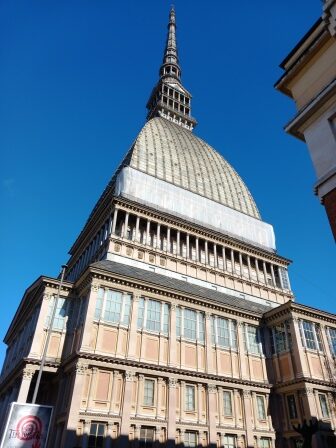
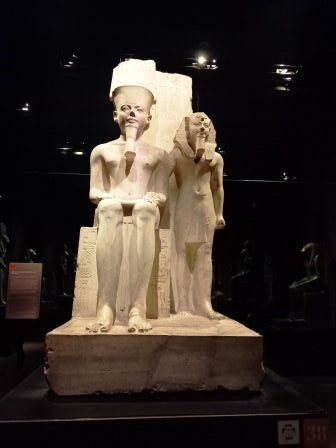
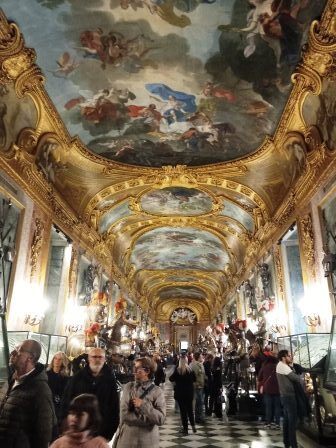
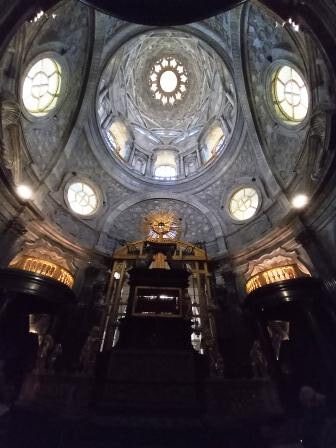
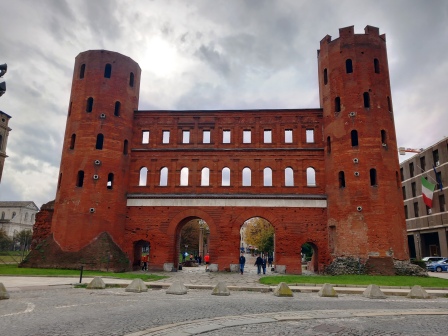
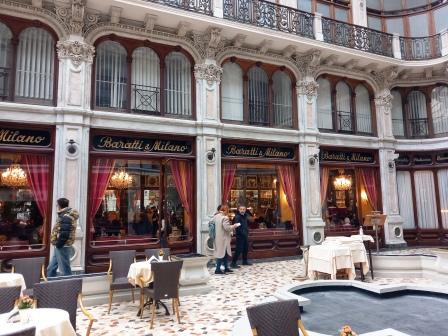
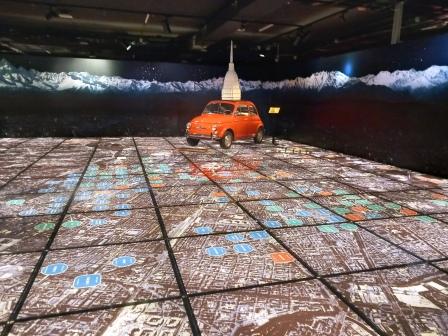
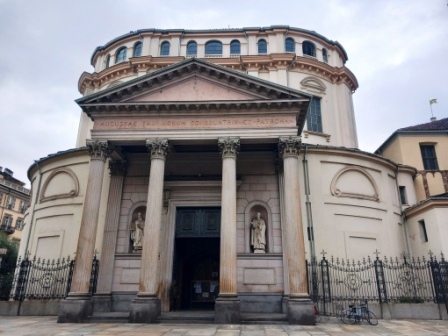
Comments are closed